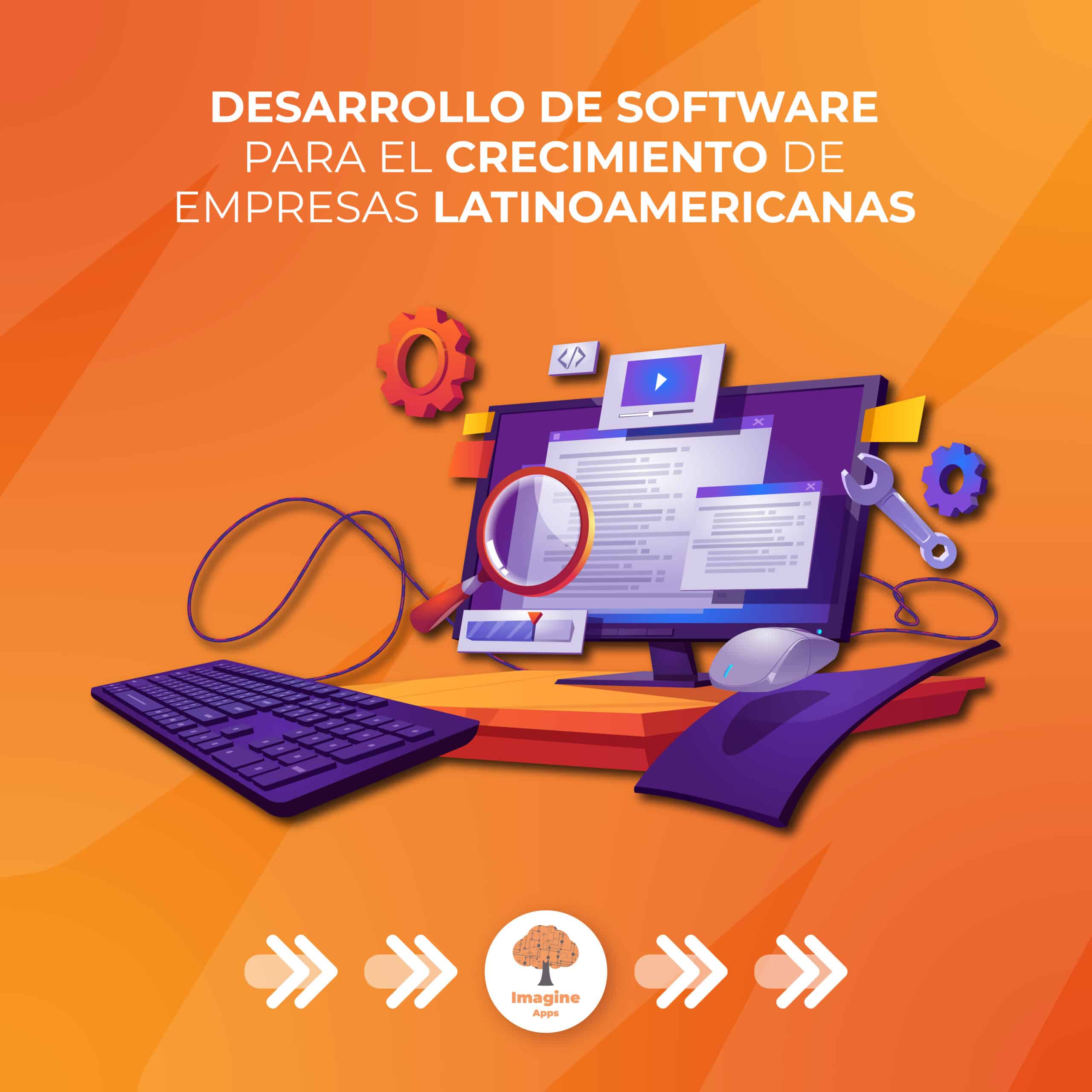In today’s digital fabric, cloud computing has emerged as the essential pillar that drives innovation and transforms the way businesses operate. This extensive analysis dives into the new era of cloud computing, exploring not only the foundational technologies, but also the specialized expertise it offers, the customized strategies it fosters, and how it translates into substantial savings in time and resources. From the foundations to the latest trends, we will examine the key reasons behind the dominance of cloud computing in today’s business landscape.
In today’s digital age, artificial intelligence (AI) has established itself as a transformative force redefining the way we interact with technology. This comprehensive analysis will explore the ongoing evolution of AI, unraveling the fundamental reasons behind its growth and widespread adoption. From specialized expertise to customized strategies, we will examine how AI is not only saving time and resources, but is also shaping the business and technology landscape in surprising ways. From its practical applications to its ethical implications, this analysis will provide a comprehensive view of AI today and its impact on the future.
The Specialized Cloud Experience:
The cloud is not just a virtual warehouse; it is a complex ecosystem. We will analyze how specialized cloud expertise, from solution architects to security engineers, becomes the crucial differentiator. Through case studies, we will discover how specific cloud expertise can optimize deployment, improve security and ensure exceptional performance.
In today’s dynamic digital environment, cybersecurity has ascended as a critical priority for organizations of all sizes. This comprehensive analysis dives into the complex world of cybersecurity, exploring not only the underlying technologies, but also the specialized expertise that drives its success, the customized strategies it defines, and how it translates into effective defense against cyber threats. From malware prevention to protecting sensitive data, we will examine the key reasons behind the centrality of cybersecurity in today’s digital age.
Customized Cloud Strategies:
Every enterprise is unique, and your cloud strategy should reflect that uniqueness. We will explore how customized cloud strategies, from the choice of deployment models to the selection of specific services, are integrated into the business fabric. We will look at examples that illustrate how customized strategies maximize efficiency and boost alignment with business objectives.
Data analytics has emerged as a crucial component of business decision making in the 21st century. This comprehensive analysis dives into the fascinating world of data analytics, exploring not only the fundamental technologies, but also the specialized expertise that drives its success, the personalized strategies it defines, and how it translates into informed and effective decision making. From interpreting large data sets to implementing predictive models, we will examine the key reasons behind the continued growth of data analytics in today’s business landscape.
Time and Resource Savings through Cloud Computing:
Time and resources are critical assets. We will delve into how cloud computing translates into significant savings, from reducing implementation time to optimizing operational costs. With case studies, we will explore how the cloud enables enterprises to channel resources more efficiently and improve operational agility.
In the dynamic business landscape, data analytics has become an indispensable tool for unraveling valuable insights and guiding informed strategies. This comprehensive analysis will explore how data analytics not only provides deep insights into patterns and trends, but also drives innovation and strategic decision making. From exploring big data sets to implementing advanced algorithms, we will dive into the exciting world of data analytics and its transformative role in the digital age.
Strategic Keywords in Cloud Computing:
In the vast digital landscape, keywords are beacons that guide visibility. We will examine key terms such as “cloud computing,” “cloud services,” “cloud security,” and “cloud migration.” These keywords are essential for relevance in the digital age and highlight how the cloud has evolved from a trend to a business necessity.
In the digital universe, visibility and relevance are crucial, and strategic keywords play a key role in this landscape. By exploring key terms such as “digital transformation,” “technology innovation,” “cybersecurity,” and “data analytics,” we can understand the ever-evolving digital landscape and how companies are looking to adapt and thrive in the information age. These keywords are strategic entry points for understanding and addressing challenges and opportunities in the changing technology environment.
Impact of the Cloud on Business Innovation:
Innovation and the cloud are intrinsically intertwined. We will look at how the cloud drives enterprise innovation, from rapid experimentation to agile product development. We will look at examples that illustrate how companies are using the cloud as a platform for continuous creation and implementation of innovative solutions.
In today’s dynamic business environment, innovation is an essential driving force, and the cloud emerges as a key catalyst in this process. The ability to access scalable resources, experiment with new ideas and rapidly deploy innovative solutions has transformed the way companies approach the creation and improvement of products and services. From agile startups to large corporations, the cloud provides fertile ground for the incubation and execution of cutting-edge ideas, establishing itself as an unrivaled enabler for business innovation in the digital age.
Cloud Security: An Unwavering Pillar:
Security is a central concern. We will explore how the cloud addresses security concerns, from data protection to cyber threat prevention. With specific case studies, we will highlight advanced security measures that make the cloud an unwavering pillar in protecting sensitive business information.
In today’s complex digital landscape, data security and privacy are unwavering imperatives, and the cloud stands as a bastion of trust for enterprises. The cloud’s robust architecture incorporates advanced security measures, from end-to-end encryption to multi-factor authentication systems, ensuring the integrity and confidentiality of stored data. Continuous vigilance against cyber threats, backed by automatic updates and regular security audits, cements the cloud as a safe haven for business information, offering invaluable peace of mind in a dynamic and changing digital environment.
Cloud Evolution and Emerging Trends:
The cloud is not static; it is constantly evolving. We will investigate the evolution of cloud computing and emerging trends, from the mass adoption of hybrid cloud to the growing importance of artificial intelligence in cloud environments. We will discuss how enterprises can anticipate and capitalize on these trends to stay ahead of the curve.
The dynamic evolution of cloud computing has led to the mass adoption of hybrid models, marking a phase where flexibility and efficiency converge. In addition, trends are emerging that redefine the cloud experience, such as the increasing integration of artificial intelligence (AI) into cloud services. The synergy between cloud and AI opens up new possibilities, from advanced analytics to real-time machine learning systems. By understanding and embracing these emerging trends, enterprises can not only optimize their current cloud operations, but also prepare for a future where innovation and agility remain paramount in the ever-changing digital business landscape.
Cloud and Digital Transformation:
Cloud is the foundation of digital transformation. We will delve into how cloud adoption drives digital transformation, from redefining workflows to improving the customer experience. We will study case studies that demonstrate how the cloud not only optimizes operations, but also redefines the relationship of companies with their customers and partners.
At the heart of digital transformation, strategic cloud adoption acts as a catalyst for innovation and business agility. Beyond simply optimizing internal workflows, the cloud becomes an integral enabler of new digital experiences. From implementing artificial intelligence solutions to creating collaborative online ecosystems, the cloud enables enterprises to redefine how they interact with customers and how they deliver value in a digitally connected world. In this context, digital transformation is not just about internal efficiency, but about the ability to continuously adapt and evolve in response to changing market demands and customer expectations.
Challenges and Myths of Cloud Computing:
Despite its benefits, the cloud faces challenges and myths. We will address common concerns, from migration resistance to perceived security. With concrete examples, we will explore how enterprises can overcome these challenges and unravel the myths surrounding cloud computing.
As enterprises embrace transformation through the cloud, they are encountering challenges that go beyond mere technical implementation. Resistance to migration, a common concern, often arises due to apprehension about disrupting existing operations and adapting to new models.
In addition, the myth of cloud security persists, despite advanced security protocols implemented by leading vendors. Through efficient organizational change strategies and a thorough understanding of cloud security measures, enterprises can address these challenges and debunk myths, paving the way for broader and more successful adoption of cloud computing.
Promising Future of Cloud Computing:
In the conclusion, we will reflect on the promising future of cloud computing. We will discuss how the cloud will continue to be the key driver of business efficiency, innovation and technology evolution. Looking ahead, we will explore how enterprises can prepare to fully embrace the opportunities that the new era of cloud computing offers them.
As we move into the future, cloud computing is emerging as the foundation upon which the most exciting technology innovations will be built. The continued integration of the cloud with emerging technologies, such as artificial intelligence and quantum computing, foreshadows a scenario where flexibility, scalability and agility will become even more crucial.
This promising future also manifests itself in the ability of enterprises to leverage advanced data analytics and take service personalization to unprecedented levels. As the cloud becomes the driving engine of the digital revolution, the opportunities for global collaboration, operational efficiency and value creation expand, outlining an exciting horizon for the next phase of cloud computing.
Cloud Computing and Edge Computing:
The synergy between cloud and edge computing is redefining the way enterprises manage and process data. We will explore how the combination of these approaches enables faster processing speed and faster decision making, especially in environments where latency is critical. Specific use cases will highlight how organizations are leveraging this convergence to optimize efficiency and improve user experience.
The interplay between cloud and edge computing presents a fascinating evolution in technology architecture. While cloud computing provides a vast centralized warehouse for processing large amounts of data, edge computing brings processing power directly to the source of data generation, reducing latency and improving efficiency.
This convergence manifests itself in scenarios such as the Internet of Things (IoT), where devices at the edge of the network can perform processing tasks locally before sending data to the cloud. This synergistic collaboration between cloud and edge computing promises to drive significant advances in processing speed and real-time decision making, transforming the way we interact with digital information.
Sustainability in Cloud Computing:
Sustainability has become a global priority, and cloud computing is no exception. We will look at how cloud service providers are adopting sustainable practices, from energy efficiency to carbon offsetting. We will look at examples that show how companies can align their cloud strategy with environmental goals to make a positive impact on the planet.
Quantum Cloud: Exploring New Frontiers:
Quantum computing is on the horizon as a revolutionary technology. We will delve into how the quantum cloud, by enabling access to quantum computing power through the cloud, is opening new frontiers in solving complex problems. Through case studies, we will explore how companies are exploring this new dimension of computing to address challenges that previously seemed insurmountable.
Personalization in the Cloud: Towards Unique User Experiences:
Personalization has become essential in the digital age. We will explore how cloud computing facilitates the personalization of services and products, from precise recommendations to adaptive user interfaces. With practical examples, we will highlight how companies can use cloud processing power to deliver unique user experiences and strengthen customer loyalty.
Cloud and Cybersecurity: A Strategic Alliance:
Cybersecurity is a constant concern. We will discuss how cloud computing not only addresses security challenges, but also becomes a strategic ally in defending against cyber threats. We will examine specific cases that illustrate how enterprises are strengthening their security postures by leveraging the advanced capabilities of cloud service providers.
Blockchain and Cloud: Transforming Enterprise Trust:
Blockchain technology has redefined trust in digital transactions. We will delve into how cloud and blockchain technology converge to provide transparent, secure and decentralized solutions. We will study cases that demonstrate how this combination is transforming enterprise trust, from supply chain to sensitive data management.
Cloud and Education: Enabling Distance Learning:
Education has undergone a radical transformation, especially with the rise of distance learning. We will explore how cloud computing has been a key enabler for online education, from learning platforms to collaborative tools. With concrete examples, we will analyze how the cloud is paving the way for global access to education.
Data Governance in the Cloud: Ensuring Integrity and Compliance:
Data governance becomes crucial as enterprises migrate to the cloud. We will investigate how the cloud facilitates the implementation of data governance policies, ensuring integrity, confidentiality and compliance. With specific use cases, we will highlight how enterprises can establish robust data governance in cloud environments to ensure data quality and security.
Cloud Collaboration: Transforming the Way We Work:
Enterprise collaboration has been reinvented by cloud computing. We will look at how collaborative tools in the cloud are transforming the way teams work together, from simultaneous document editing to integrated video conferencing. We will look at examples that highlight how cloud collaboration improves efficiency and agility in distributed enterprise environments.
Enterprise Resilience through the Cloud: Preparing for the Unexpected:
Enterprise resilience has become crucial in a volatile world. We will explore how cloud computing becomes a fundamental building block for resilience, enabling business continuity even in unexpected situations. With specific case studies, we will demonstrate how companies are using the cloud to establish disaster recovery plans and ensure operational resilience.
We will recap the revolution that the new era of cloud computing has brought with it. We will look at how specialized expertise, customized strategies, time and resource savings, and the ability to adapt to emerging trends are cementing the cloud’s position as the cornerstone of business transformation. We will look ahead, exploring the unexplored opportunities and innovations that will continue to define the future of cloud computing.
The adoption of cloud computing is a crucial step for many companies today. However, to take full advantage of its benefits, it is essential to follow some key strategies. Here are some practical tips for maximizing the value of cloud computing:
Assess Your Needs: Before migrating to the cloud, conduct a thorough assessment of your business needs and goals. Understand what workloads are ideal for the cloud and what type of services best suit your operations.
Choose the Right Deployment Model: The cloud offers varied deployment models, such as public, private and hybrid. Select the model that aligns most closely with your security, performance and scalability requirements.
Leverage Managed Services: Managed services in the cloud can save you time and effort. Consider using services such as managed databases, artificial intelligence services and monitoring tools to optimize your operations.
Prioritize Security from the Start: Security is a critical consideration. Implement strong security practices from the start, including data encryption, identity and access management, and constant monitoring for potential threats.
Continuously Optimize Costs: The cloud offers flexibility, but it can also generate costs. Use monitoring and cost management tools to optimize your resources. Scale your resources according to demand and consider reserving instances for discounts.
Implement Backup and Recovery Strategies: Make sure you have solid backup and recovery strategies in place. Use redundant storage services and perform regular recovery tests to ensure the availability of your data.
Encourage Team Collaboration: Cloud computing facilitates collaboration among distributed teams. Leverage cloud collaboration tools to improve the communication and efficiency of your teams, regardless of their geographic location.
Stay Current on Technology Trends: Technology is constantly evolving. Keep up with the latest trends in the cloud, such as quantum computing, edge computing and improvements in artificial intelligence. Evaluate how these trends can benefit your company.
Train Your Staff: Provide ongoing training to your staff so they are aware of best practices in the cloud. A well-informed team can maximize the efficiency and security of cloud operations.
Constantly Monitor Performance: Continuous performance monitoring is essential. Use monitoring tools to evaluate the performance of your applications, identify bottlenecks and ensure an optimal experience for end users.





